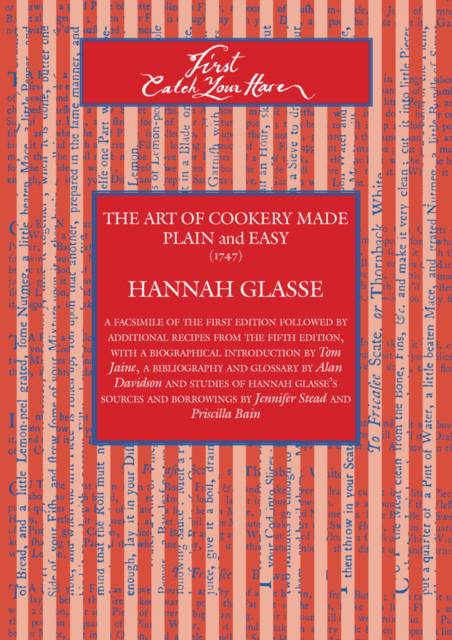
- Retrait gratuit dans votre magasin Club
- 7.000.000 titres dans notre catalogue
- Payer en toute sécurité
- Toujours un magasin près de chez vous
- Retrait gratuit dans votre magasin Club
- 7.000.0000 titres dans notre catalogue
- Payer en toute sécurité
- Toujours un magasin près de chez vous
First Catch Your Hare
The Art of Cookery Made Plain and Easy (1747)
Hannah Glasse
Livre broché | Anglais
37,45 €
+ 74 points
Description
This is a first-edition facsimile (see history below) of England's most significant 18th-century cookery book, most often recalled by the instruction 'First catch your hare...' (which she never wrote herself). It is important for several reasons: it was written by an independent woman: it was composed with the unschooled servant-class in mind; it exemplifies the battle between English and French influences in the kitchen; it contains some important recipes (not least, the first in English for curry). Glasse was reprinted countless times through the 18th century and her book was quickly republished in America. The life story of the author herself is also of great interest: she was a relatively uneducated, illegitimate daughter of a Northumbrian gentleman. She eloped at the age of 16 with a not-very-successful suitor and in the course of her career had 10 children, spent time in Marshalsea debtors prison and Fleet prison because of bankruptcy but managed to write a book which went through 20 editions in the 18th-century alone and continues to command a ready market among those interested in food history and historical cookery. Our edition, in various guises, has been kept in print by Prospect since 1983. It is a facsimile of the first edition (1747), supplemented by the recipes which the author added up to the fifth edition and furnished with a preface, biography of Glasse by Tom Jaine, introductory essays by Jennifer Stead and Priscilla Bain, a glossary by Alan Davidson, notes, and an index. When Stead was asked to contribute to the 1983 printing, she examined the 1747 publication and made what Davidson and the food writer Helen Saberi described as a "truly pioneering work", studying each recipe and tracing which of them were original or had been copied from other writers as was very common since recipes were not covered by the Statute of Anne (1709) which governed copyright at the time. It was Stead who established that Glasse had copied 342 of them from others. Read two articles by Stead below about Glasse's sources and "originality". These first appeared in consecutive issues of Petits Propos Culinaires, issues 13 and 14.
Spécifications
Parties prenantes
- Auteur(s) :
- Editeur:
Contenu
- Nombre de pages :
- 272
- Langue:
- Anglais
Caractéristiques
- EAN:
- 9781903018880
- Date de parution :
- 01-01-12
- Format:
- Livre broché
- Format numérique:
- Trade paperback (VS)
- Dimensions :
- 175 mm x 244 mm
- Poids :
- 544 g

Les avis
Nous publions uniquement les avis qui respectent les conditions requises. Consultez nos conditions pour les avis.






